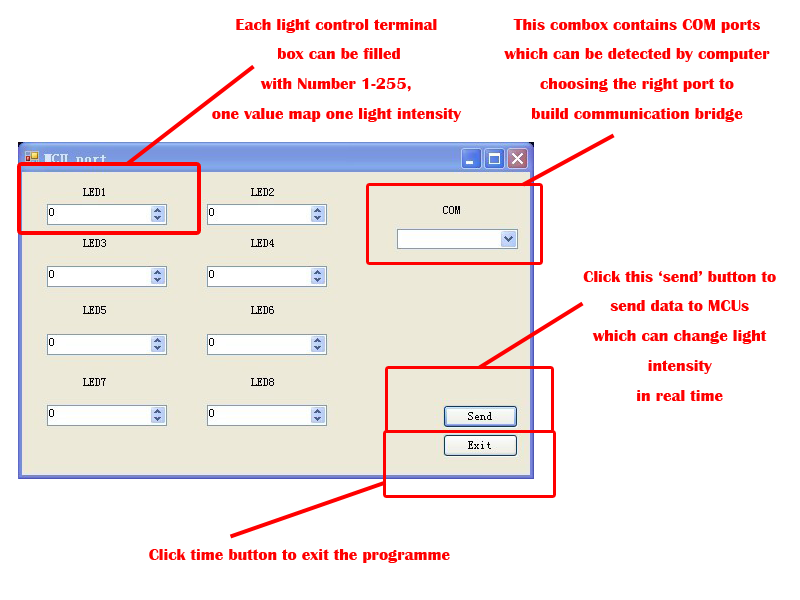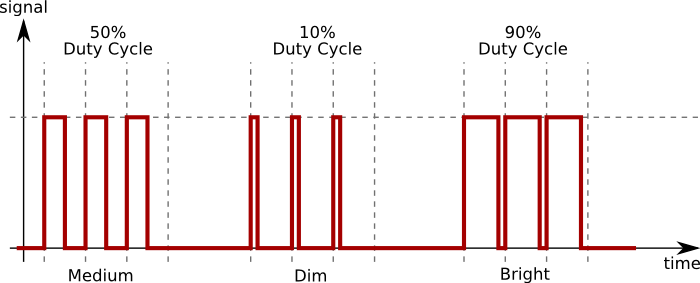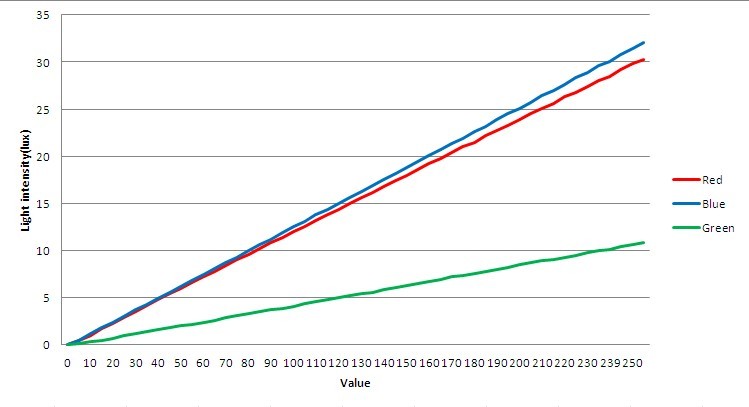Team:SJTU-BioX-Shanghai/Project/Luminous device/Control
From 2013.igem.org
(Created page with "{{Template:13SJTU_header}} {{Template:13SJTU_nav_project}} <table><tr> <td valign="top" width="200"> {{Template:12SJTU_floatnav_head}} <html> <script type="text/javascript"> // ...") |
(→Output) |
||
| (17 intermediate revisions not shown) | |||
| Line 1: | Line 1: | ||
{{Template:13SJTU_header}} | {{Template:13SJTU_header}} | ||
| - | {{Template: | + | {{Template:13SJTU_nav}} |
<table><tr> | <table><tr> | ||
| Line 35: | Line 35: | ||
{{Template:12SJTU_part_summary_foot}} | {{Template:12SJTU_part_summary_foot}} | ||
| + | |||
| + | =Software= | ||
| + | |||
| + | Due to the construction of MCU board, we use COM port as communication bridge. The programme was written by C#. In this progamme, we can adjust the light intensity in real time. | ||
| + | |||
| + | [[image:13SJTU_Form.jpg|thumb|350px|left|''Fig.1'' Communication Form]] | ||
| + | |||
| + | At first, choose one port which is connectting with MCU board from the combobox. Then input the value range 1 to 255 in textboxes and click send bottom. After communication, you can interrupt the connection, and LEDs will keep their light intensity. | ||
| + | |||
| + | Each value sent by computer can generate a PWM wave, and each wave can generate one light intensity. | ||
=PWM= | =PWM= | ||
| - | Pulse-width modulation (PWM) is a commonly used technique for controlling power to inertial[ambiguous] electrical devices | + | Pulse-width modulation (PWM) is a commonly used technique for controlling power to inertial[ambiguous] electrical devices. |
| - | The average value of voltage (and current) fed to the load is controlled by turning the switch between supply and load on and off at a fast pace. The longer the switch is on compared to the off periods, the higher the power supplied to the load is. | + | The average value of voltage (and current) fed to the load is controlled by turning the switch between supply and load on and off at a fast pace. The longer the switch is on, compared to the off periods, the higher the power supplied to the load is. |
The PWM switching frequency has to be much faster than what would affect the load, which is to say the device that uses the power. Typically switching's have to be done several times a minute in an electric stove, 120 Hz in a lamp dimmer, from few kilohertz (kHz) to tens of kHz for a motor drive and well into the tens or hundreds of kHz in audio amplifiers and computer power supplies. | The PWM switching frequency has to be much faster than what would affect the load, which is to say the device that uses the power. Typically switching's have to be done several times a minute in an electric stove, 120 Hz in a lamp dimmer, from few kilohertz (kHz) to tens of kHz for a motor drive and well into the tens or hundreds of kHz in audio amplifiers and computer power supplies. | ||
| Line 70: | Line 80: | ||
LED under PWM control | LED under PWM control | ||
| - | [[image: | + | [[image:13SJTU_Msp.png]] |
| - | + | ||
| - | + | ||
| - | + | ||
| - | + | ||
| - | + | =Output= | |
| + | Each light can generate a linear curve of light intensity under the control of PWM wave. Each luminous source focus on one light sensor. Through circles or simulation data, we can probably find a optimal metabolic pathway. With this accurate method, we can precisely explore the expression of each gene in the metabolic system or control traget gene. Further more, this system can also be used in testing creatures' sensibility on light. | ||
| - | + | [[image:13SJTU_LED_Chart.jpg|thumb|500px|right|''Fig.2'' Linear relationship between value and light intensity]] | |
| - | [[image: | + | |
<!----------------------------------------------------到这里结束---------------------------------------> | <!----------------------------------------------------到这里结束---------------------------------------> | ||
| Line 86: | Line 92: | ||
| - | {{Template: | + | {{Template:13SJTU_footer}} |
Latest revision as of 04:19, 28 September 2013
|
| ||
|
 "
"


